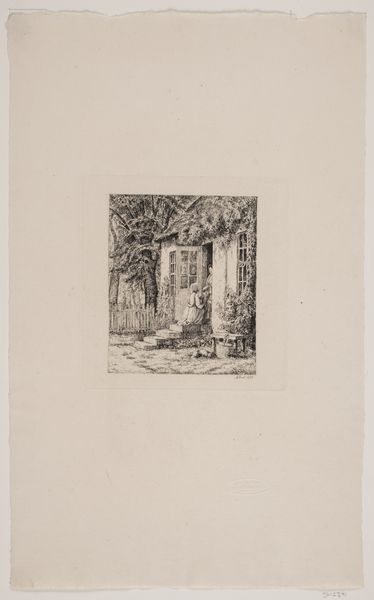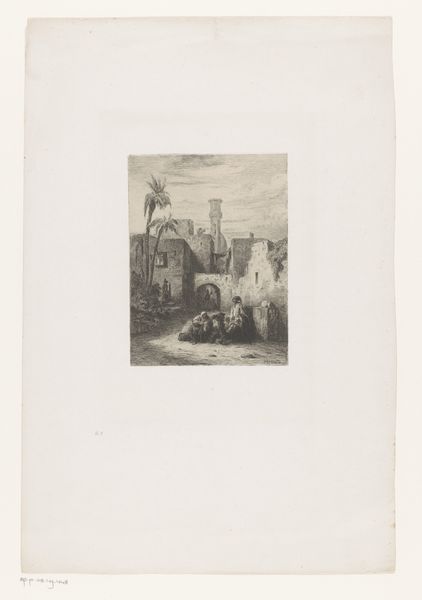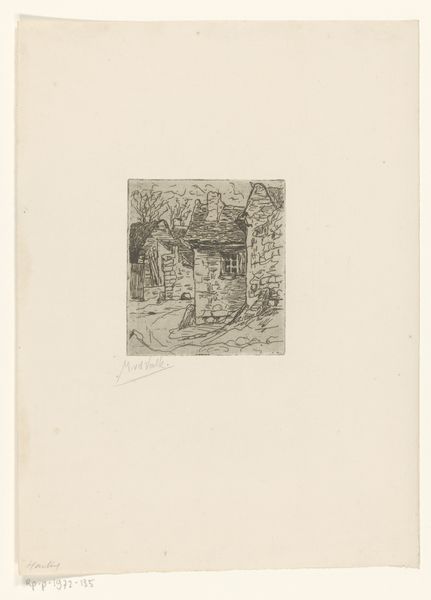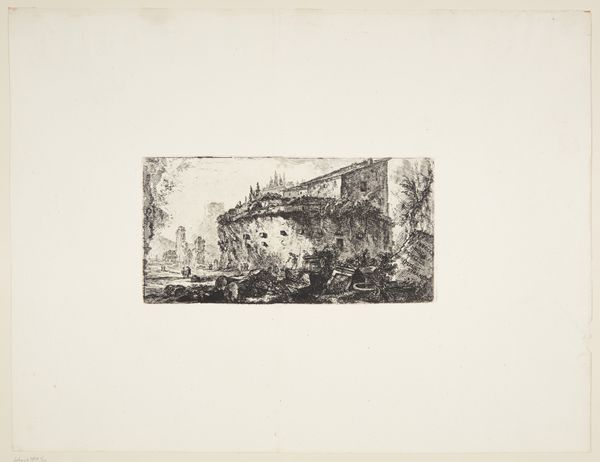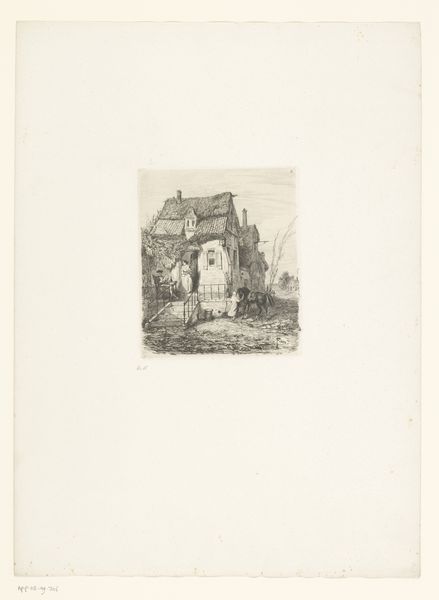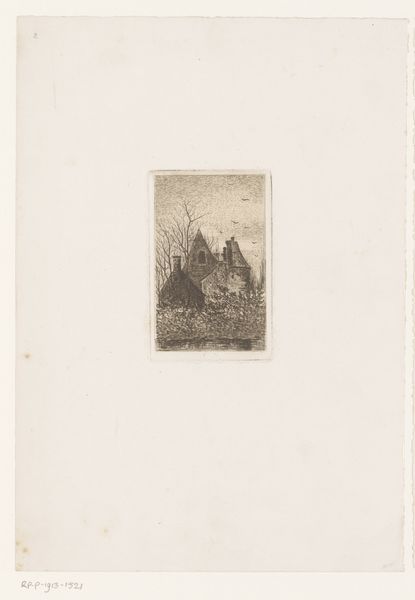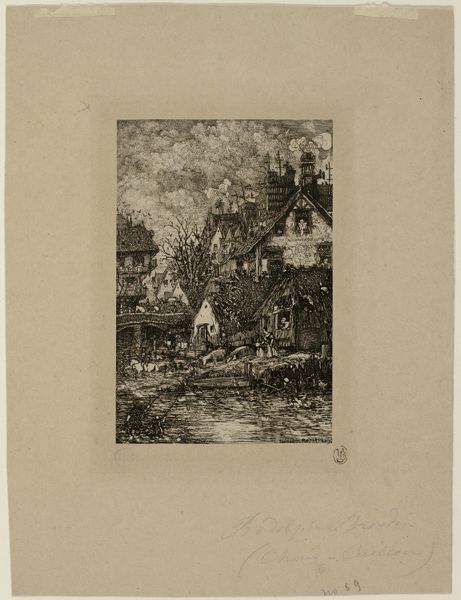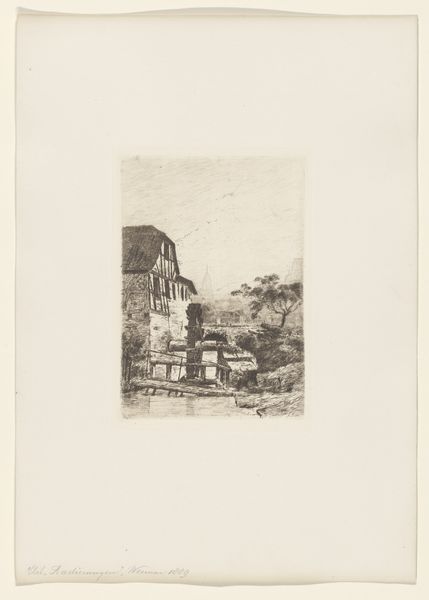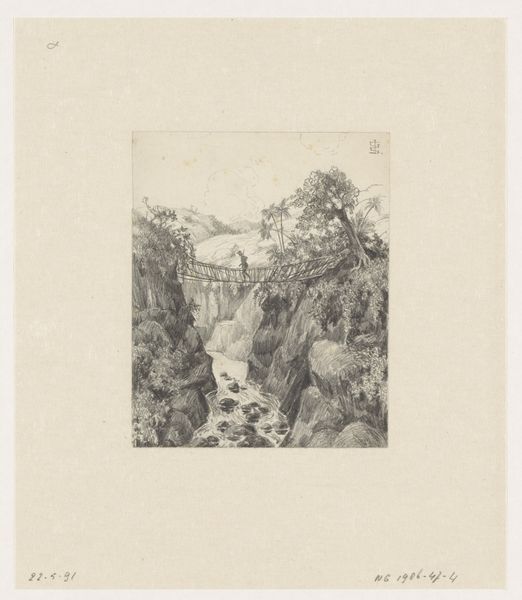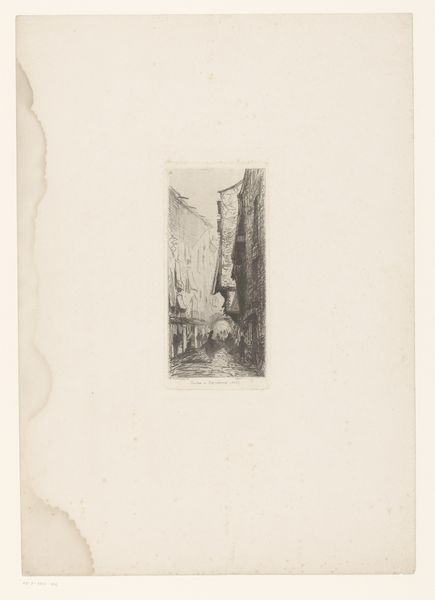
Dimensions: 141 × 82 mm (image); 168 89 mm (plate); 326 × 252 mm (sheet)
Copyright: Public Domain
Editor: Here we have Rodolphe Bresdin’s "Watermill" from 1866, an etching on paper. It's so incredibly detailed for such a small print, and I’m struck by how this ordinary scene seems almost fantastical. What do you see in this piece? Curator: I see the labour and material process inherent to etching as central. Bresdin, in choosing this relatively accessible printmaking method, participates in a wider dialogue about artistic production. How does he democratize art through readily available means? Consider the socio-economic implications; is he making art for the masses or showcasing a unique skill set to a patron? Editor: That’s an interesting perspective! I was thinking more about the Romanticism tag and how it captures the feeling of being overwhelmed by nature. But you’re right, the choice of etching seems significant given that photography was becoming more popular at the time. Was printmaking then more affordable or more profitable, given photography’s rising appeal? Curator: It raises the question of skill versus mechanical reproduction. Photography threatened traditional art forms but also liberated them. Etching, at this time, existed in this complex tension. It invites us to contemplate labor: the time investment required to create such intricate detail. Do you think this print, therefore, acts as a sort of commentary on the industrial revolution? Is it a lament for pre-industrial methods? Editor: Possibly, I hadn’t considered the role of labor so explicitly. The emphasis on the process behind creating the print shifts the focus from just admiring the scene to thinking about the artist’s effort, and what he’s trying to say about production in general. Thanks! Curator: And thanks to you for noticing the fantastical and ordinary colliding. It all gives insight into the relationship between materiality, skill, and artistic intention, revealing broader concerns around art-making in the face of societal change.
Comments
No comments
Be the first to comment and join the conversation on the ultimate creative platform.
